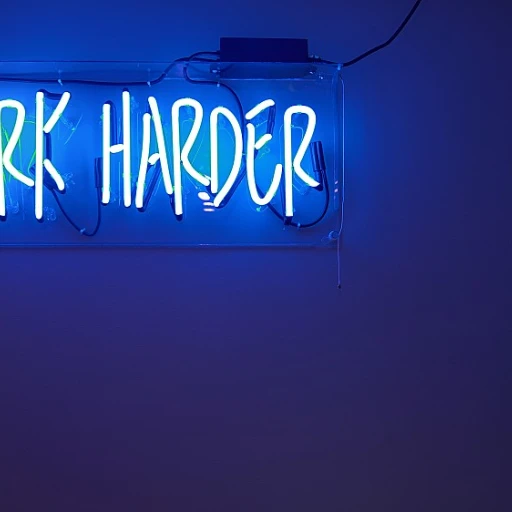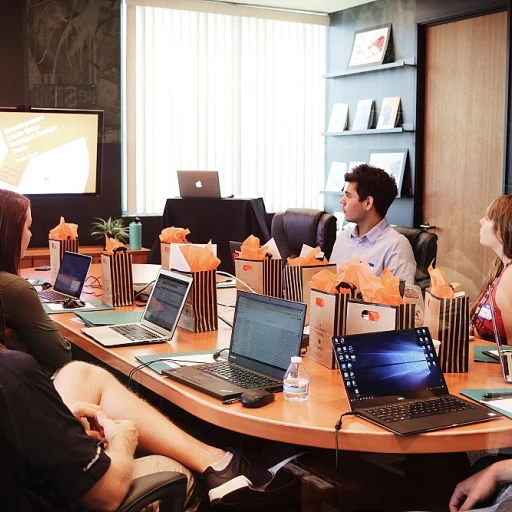
The Role of Group Norms in Mentoring
Understanding the Importance of Shared Expectations in Mentorship
Group norms play a pivotal role in the dynamics of professional mentoring, acting as the invisible glue that holds team members together, ensuring effective communication and collaboration. Within teams, the establishment of these norms creates an environment where social behaviors align and group members feel a sense of belonging and purpose. They serve as the ground rules that guide decision-making processes and foster an atmosphere of mutual respect and accountability.
The balance norms within a mentorship group can influence the success of a team, as they set expectations for how members will interact, share knowledge, and contribute to the group's objectives. When team norms are well-defined, they help streamline meetings, define roles clearly, and enhance overall team success. By having a clear framework of communication norms, team members can work with efficiency, reducing misunderstandings and fostering a culture of inclusivity.
As group norms help shape the social norms within teams, these guidelines become instrumental in ensuring every team member understands the implicit norms and their expected contributions to the mentoring process. Understanding these elements is essential for anyone involved in professional mentoring, as they facilitate the creation of a cohesive team environment. For those looking to delve further into how effective mentoring systems capitalize on these elements, you may find insights in highly effective professional mentoring.
Establishing Effective Group Norms
Key Steps to Establish Effective Group Norms
Establishing effective group norms necessitates a structured approach, fostering an environment where all team members feel valued and engaged. Considering the impact of legacy mentorship can provide additional insight into crafting lasting norms. Here are some strategies to ensure productive group dynamics within professional mentoring settings:
- Clear Communication: Communication norms are foundational in addressing expectations among group members. Regular meetings provide platforms for expressing views and refining roles, promoting transparency and understanding.
- Collaborative Rule Setting: Involving the team in establishing ground rules ensures that group norms reflect collective value systems. This collaborative effort enhances team accountability and investment.
- Inclusivity and Respect: Team success heavily relies on fostering a culture of inclusivity. Encouraging diverse perspectives enriches discussions and allows for the development of comprehensive solutions.
- Regular Reviews: Periodic review of established norms aids in adapting to dynamic work environments. This process identifies areas needing adjustment while reinforcing positive behaviors.
- Modeling Desired Behaviors: Facilitators should demonstrate adherence to group norms, promoting norm regularity across all group members. This reinforcement of implicit norms sustains group harmony.
Implementing these approaches can significantly contribute to balanced group dynamics within teams. By cementing norms that align with group objectives, the likelihood of achieving productive and meaningful outcomes increases.
Challenges in Navigating Group Norms
Understanding the Complexities of Navigating Group Norms
Group norms play a pivotal role in shaping the behaviors and actions within teams. However, navigating these norms can present several challenges that individuals and teams must address effectively to ensure team success.
One of the primary challenges is aligning individual behavior with group expectations. In any group, members come from diverse backgrounds, each bringing unique perspectives and preconceived social norms. Balancing these individual norms with the collective expectations within a team setting can lead to friction. Members might struggle with adapting their behavior to align with the established group norms, especially if there is a disparity between their personal values and the team’s collective expectations.
Communication is another critical aspect. Miscommunication or lack of communication can lead to misunderstandings regarding group norms. It is essential for teams to establish clear communication norms. Without this clarity, assumptions can lead to unintended behaviors, hindering the effectiveness of teamwork.
- Implicit norms: These unspoken rules, while often powerful, can cause confusion if not clearly understood by all group members.
- Accountability: Holding team members accountable to the norms can be especially challenging without clear ground rules. This requires proactive communication and agreed-upon measures of enforcement.
The timing and environment in which group norms are communicated also add layers of complexity. Initial meetings may set the tone, but as teams evolve, so too must their norms. This means regularly revisiting established norms to adapt to any changes in team dynamics or external influences.
Furthermore, decision-making processes within teams can be impacted by the strength and clarity of group norms. Clear norms help streamline decision-making, but when norms are ambiguous or routinely disregarded, decisions can become contentious. This underscores the importance of not only establishing norms but consistently evaluating their effectiveness and adjusting as necessary.
Another challenge is the cultural influence on group norms. When members are part of culturally diverse teams, differing cultural norms can influence perceptions of acceptable and expected behavior. Embracing these differences and integrating them into the group norm framework requires sensitivity and understanding.
As teams work through these challenges, they can benefit from effective strategies for evaluating progress within professional mentoring. These strategies help ensure that the norms not only align with team objectives but also facilitate an inclusive and conducive work environment.
Cultural Influences on Group Norms
Influence of Cultural Backgrounds on Group Dynamics
In professional mentoring, understanding the cultural influences on group norms is crucial for fostering effective communication and collaboration. Different cultural backgrounds can significantly shape how group members perceive and adhere to norms within teams. For instance, in some cultures, direct communication is valued, while in others, indirect communication is the norm. This can impact how team members interact during meetings and influence decision-making processes.
Balancing Diverse Social Norms
When team members come from varied cultural backgrounds, balancing these diverse social norms becomes essential. It requires sensitivity and adaptability from all group members. Teams need to establish ground rules that respect cultural differences while promoting a cohesive work environment. This balance helps in creating a space where everyone feels valued and understood, ultimately contributing to team success.
Adapting Communication Styles
Communication norms are often influenced by cultural expectations. For example, in some cultures, interrupting during a conversation might be seen as a sign of engagement, while in others, it could be considered rude. Understanding these nuances helps in reducing misunderstandings and fostering a more inclusive atmosphere within the team. Encouraging open dialogue about these differences can help team members adapt their communication styles to better fit the group dynamics.
Impact on Accountability and Behavior
Cultural influences also affect accountability norms and behavior within teams. In some cultures, collective accountability is emphasized, whereas in others, individual responsibility is prioritized. Recognizing these differences can help in setting realistic expectations and ensuring that all team members are on the same page regarding their roles and responsibilities. This understanding is vital for maintaining harmony and achieving the group's objectives.
Adapting to Evolving Group Norms
Adapting to Changing Norms Within Teams
In the dynamic landscape of professional mentoring, adapting to evolving group norms is crucial for maintaining effective communication and collaboration. As teams grow and change, so do the implicit and explicit norms that guide their interactions. Recognizing and responding to these shifts can significantly impact team success and the overall mentoring experience.
One of the key aspects of adapting to changing norms is understanding the balance between established ground rules and emerging social norms. Team members must remain flexible, allowing for the integration of new behaviors that can enhance team dynamics. This flexibility helps in maintaining a positive work environment where all group members feel valued and heard.
Communication norms play a pivotal role in this adaptation process. As new members join the team, or as the team’s objectives evolve, the way team members communicate may need to be adjusted. Regular meetings can serve as a platform for discussing these changes, ensuring that everyone is on the same page. This proactive approach to communication helps in minimizing misunderstandings and fosters a culture of openness and accountability.
Moreover, decision-making processes within teams may also need to be revisited. As group norms shift, so might the methods by which decisions are made. Encouraging input from all team members and being open to new ideas can lead to more innovative solutions and a more cohesive team.
Finally, it is essential to recognize the role of cultural influences on group norms. As discussed earlier, cultural backgrounds can significantly impact how norms are perceived and enacted. Being aware of these influences and incorporating them into the team’s evolving norms can enhance inclusivity and respect within the group.
In conclusion, adapting to evolving group norms requires a commitment to continuous learning and flexibility. By embracing change and fostering an environment of open communication, teams can navigate the complexities of professional mentoring with greater ease and success.
Case Studies: Successful Implementation of Group Norms
Real-Life Scenarios of Implementing Group Norms in Professional Mentoring
In professional mentoring, the successful application of group norms can significantly enhance the mentoring experience. Looking at real-life examples provides valuable insights into how these norms can aid in achieving team success and fostering a productive environment. Here are a few scenarios where established norms have made a difference:
- Case Study on Effective Communication Norms: In a multinational company, a team tasked with a complex project established communication norms to bridge geographical and cultural gaps. Regular meetings were conducted with norms focusing on clear, concise exchanges and encouraging feedback. As a result, team members reported improved collaboration and understanding, leading to timely completion of tasks.
- Balancing Accountability and Flexibility: A start-up company found that setting accountability norms within teams helped maintain structure without stifling creativity. By creating balance norms that allowed team members flexibility in how they approached their work, the start-up was able to innovate while meeting deadlines, illustrating how such norms group efforts effectively.
- Overcoming Social and Implicit Norms: In a media organization, implicit social norms initially created barriers for new group members. However, by explicitly discussing these norms and introducing inclusive group norms during onboarding sessions, the organization fostered an open work environment. This approach reduced misunderstandings and improved team dynamics.
- Cultural Sensitivity in Norm Establishment: An international NGO benefited from cultural sensitivity training, allowing them to tailor their group norms to respect the diverse backgrounds of their group members. By incorporating cultural influences into their ground rules, the team improved decision-making processes and promoted a more harmonious work culture.
These scenarios reflect the dynamic interplay of norms in various team settings. They underscore how proactive engagement with group dynamics and clear communication can enhance both individual and group satisfaction, ultimately contributing to the overall success of professional mentoring initiatives.












